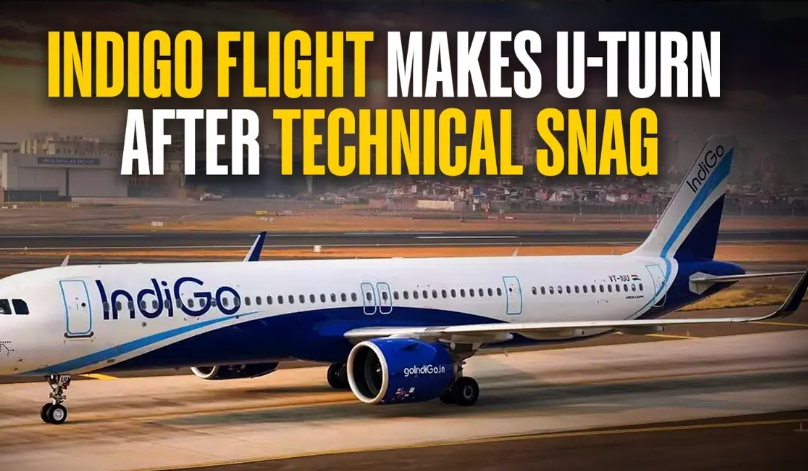Technical Snag Grounds IndiGo Flight: What Happened, Why It Matters, and What Comes Next
Summary of the Incident
A short-haul IndiGo Airbus A321 flight 6E‑5118 from Delhi to Imphal had to turn back mid‑air on July 17, 2025, after departing IGI Airport at approximately 10:25 AM. The crew detected a “minor technical snag” shortly after takeoff and elected to return as a precaution. The aircraft landed safely in Delhi around 11:16 AM. After mandatory safety checks, it departed again at roughly 12:30 PM and successfully reached Imphal at 2:53 PM—around an hour and 43 minutes behind schedule. No injuries occurred and IndiGo expressed regret for the inconvenience.
Short-Term Recap
A routine flight suddenly became a chapter in aviation safety. Flight 6E‑5118, scheduled to whisk passengers from Delhi to Imphal, faced an unexpected “technical snag” mid-cruise. The crew promptly decided to return to IGI Airport—prioritizing safety and following protocol. After thorough checks, the aircraft resumed its journey and landed safely in Imphal, albeit delayed. No passengers or crew were harmed.
When Routine Turns Unexpected
Imagine you’re on a calm morning flight out of Delhi, heading toward the beautiful hills of Manipur. Just after takeoff, the hum of engines feels comforting—until the cockpit alert signals something else. That’s precisely what happened with flight 6E‑5118. Departing around 10:25 AM, the Airbus A321 rose into the sky. But safety always comes first: the crew detected a “minor technical snag” shortly after liftoff. That’s aviation-speak for “something’s off, and we’re taking zero chances” .
Within minutes, the decision was made: a mid-air turnback to Delhi. The aircraft landed safely back at IGI Airport around 11:16 AM. Mission accomplished—but not quite. The hidden heroics were just beginning.
Behind the Scenes: Technical Snag & Safety Protocols
We all want fast, seamless travel. But aviation runs on a robust system of checks and balances. That “technical snag” might have been a simple sensor hiccup, a minor pressure fluctuation, or something that didn’t align with safety standards. IndiGo’s crew didn’t hesitate. They declared a precautionary return—executing standard operating procedures (SOPs) to the letter.
Upon touching down, engineers and technicians jumped into action. Rigorous inspections ensued—covering mechanical, hydraulic, and avionics systems. Crew debriefing and troubleshooting were part of it too. Roughly 75 minutes later (around 12:30 PM), the aircraft was deemed safe to fly. Briefing over, they resumed the journey.
What the Delay Meant for Passengers
The original schedule had them in Imphal by 1:10 PM, but they didn’t arrive until 2:53 PM. For idle souls waiting in Manipur, that felt like a lifetime. For the passengers onboard, though the plane landed safely in Delhi, the delay scrambled their travel plans—connecting flights, ground transport, or waiting loved ones. But no one was harmed, and safety was never compromised. As IndiGo put it, “we regret the inconvenience”—the classic human touch in airline-speak.
Wrapping It All Up
Flight 6E‑5118’s mid-air return is a reminder: aviation safety is a living system. A 75-minute delay is far preferable to compromising safety. This isn’t about fear—it’s about awareness, preparedness, and prioritizing lives over schedules. Airlines, regulators, and passengers all have a role in maintaining trust. And given the rising frequency of minor issues, it’s high time we scrutinize maintenance cycles, embrace smarter tracking, and treat flight disruptions as signals—not failures.
Frequently Asked Questions (FAQs)
1. Why did the flight return instead of continuing with the issue?
Because safety protocols mandate returning if any abnormality is detected. It’s far safer to ground and inspect than risk escalation.
2. Is mid-air return common in commercial flights?
Yes—airlines experience “technical snags” frequently. Reacting quickly is standard industry practice and shows crew vigilance.
3. What compensation can passengers expect for such delays?
Depending on airline policy and delay duration, compensation may include meals, accommodations, rebooking, or refunds where applicable.
4. Should passengers fear flying after incidents like these?
Not at all. These events are signs of proactive safety—flights are returned before anything serious develops.
5. How can airlines reduce such mid-air snags?
Through improved predictive maintenance, data analytics, timely part replacements, and closer collaboration with regulators and OEMs.




